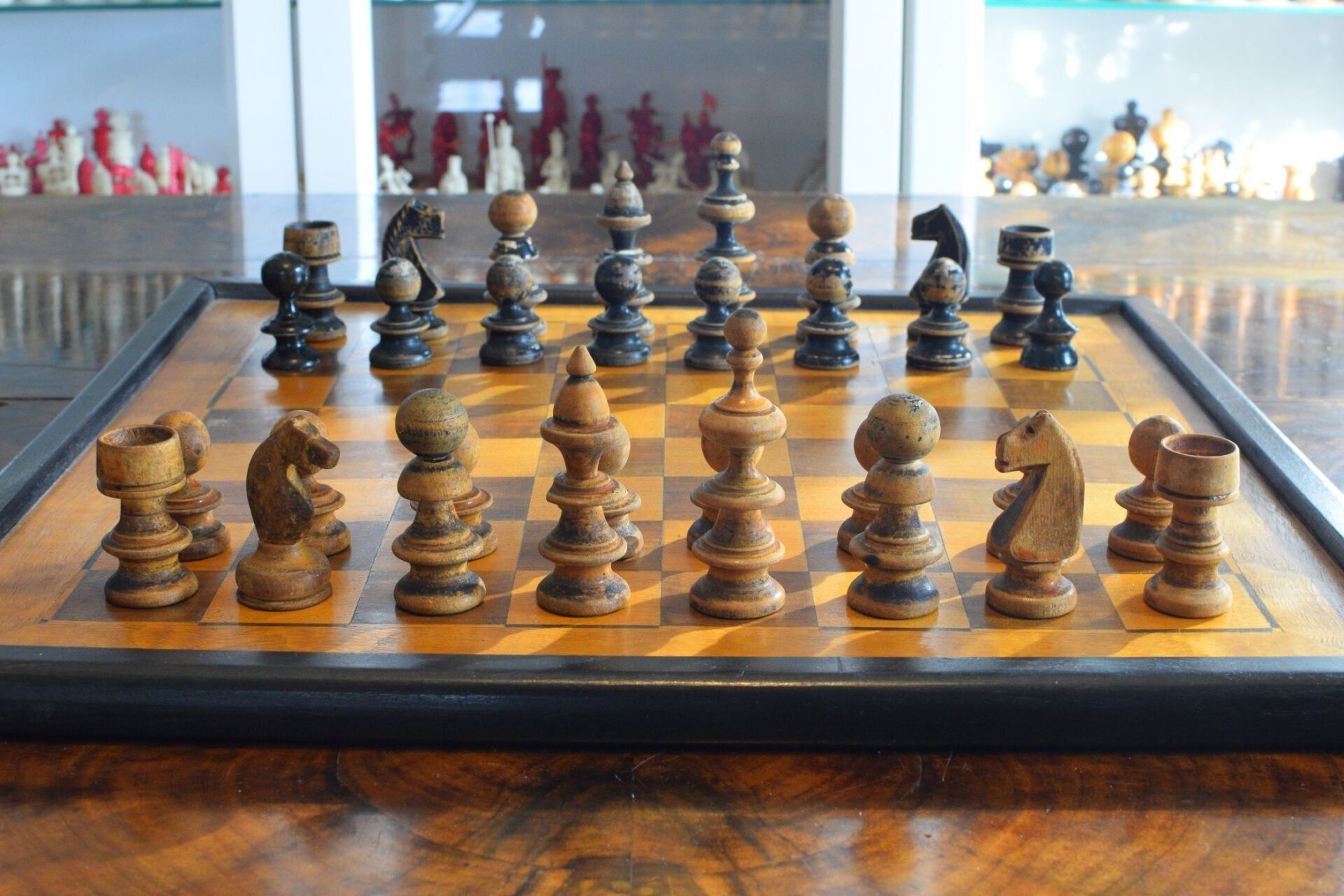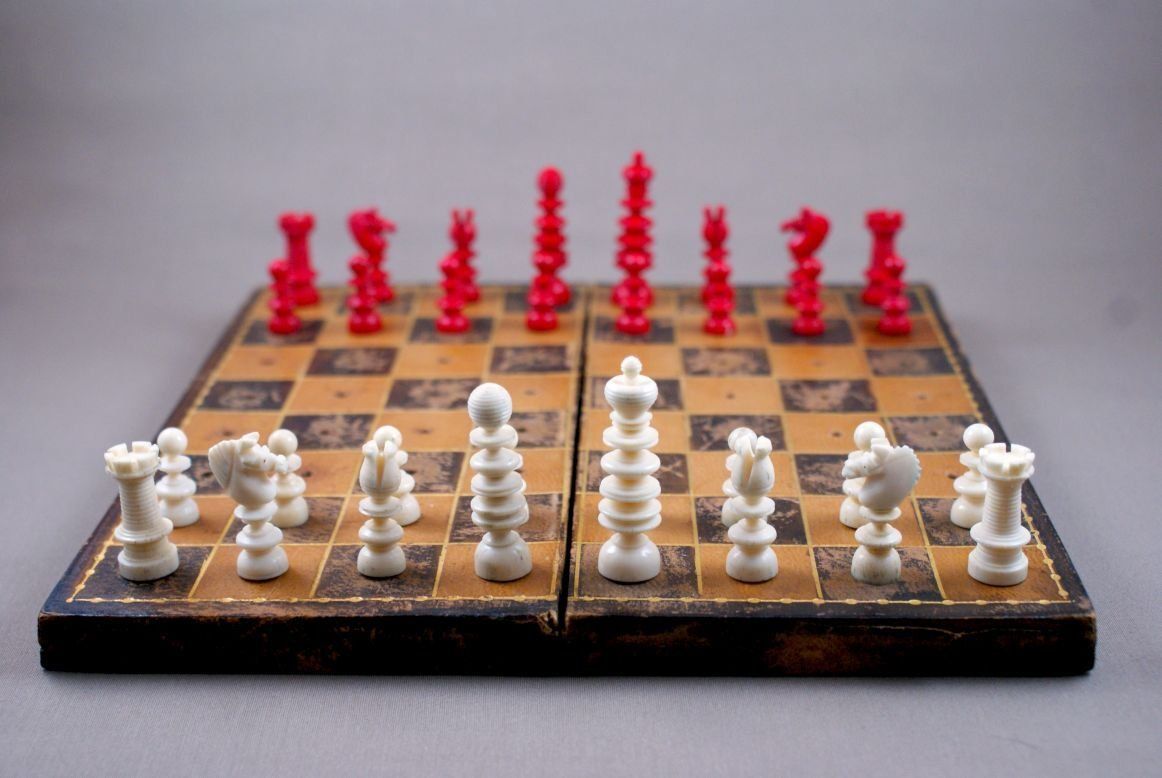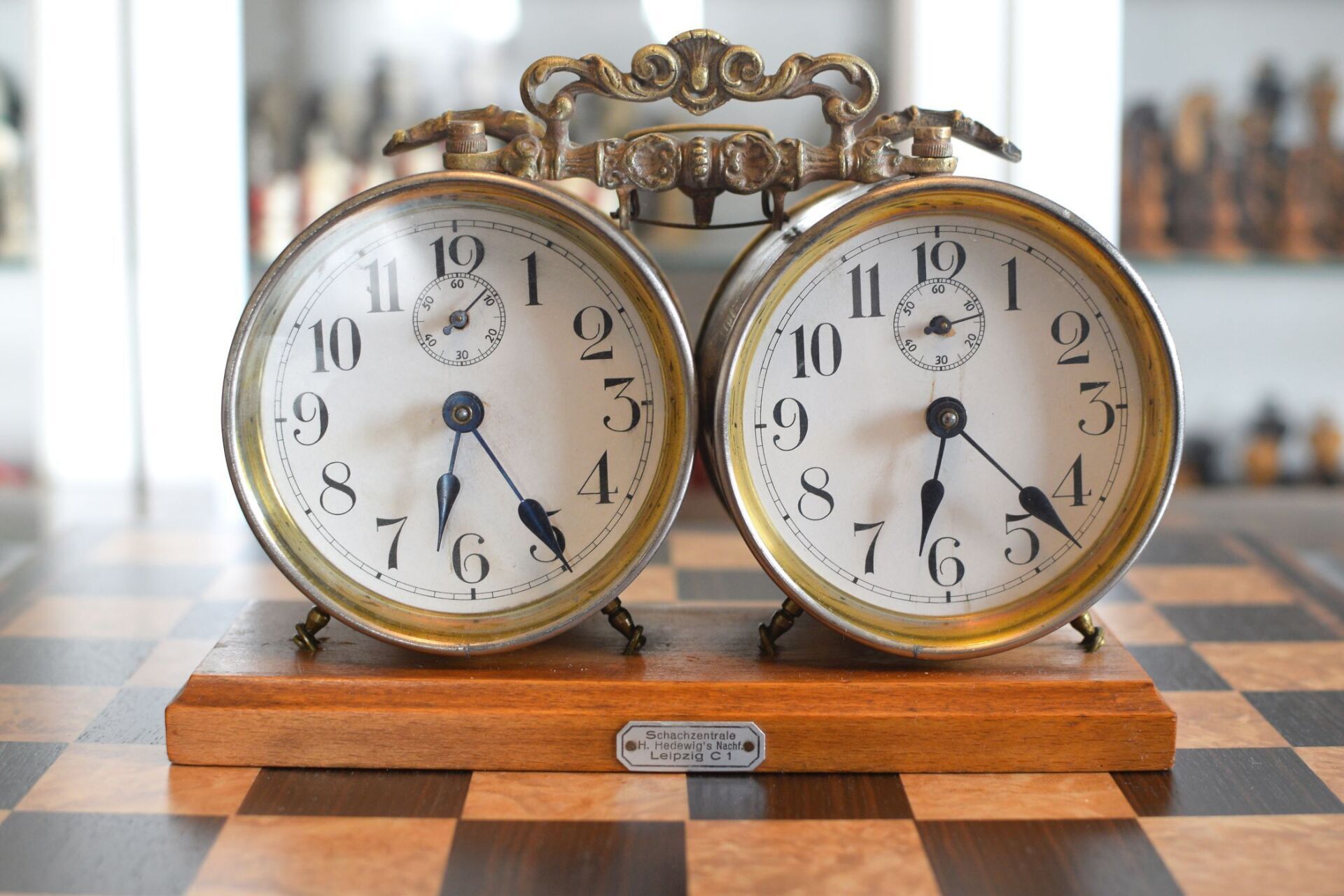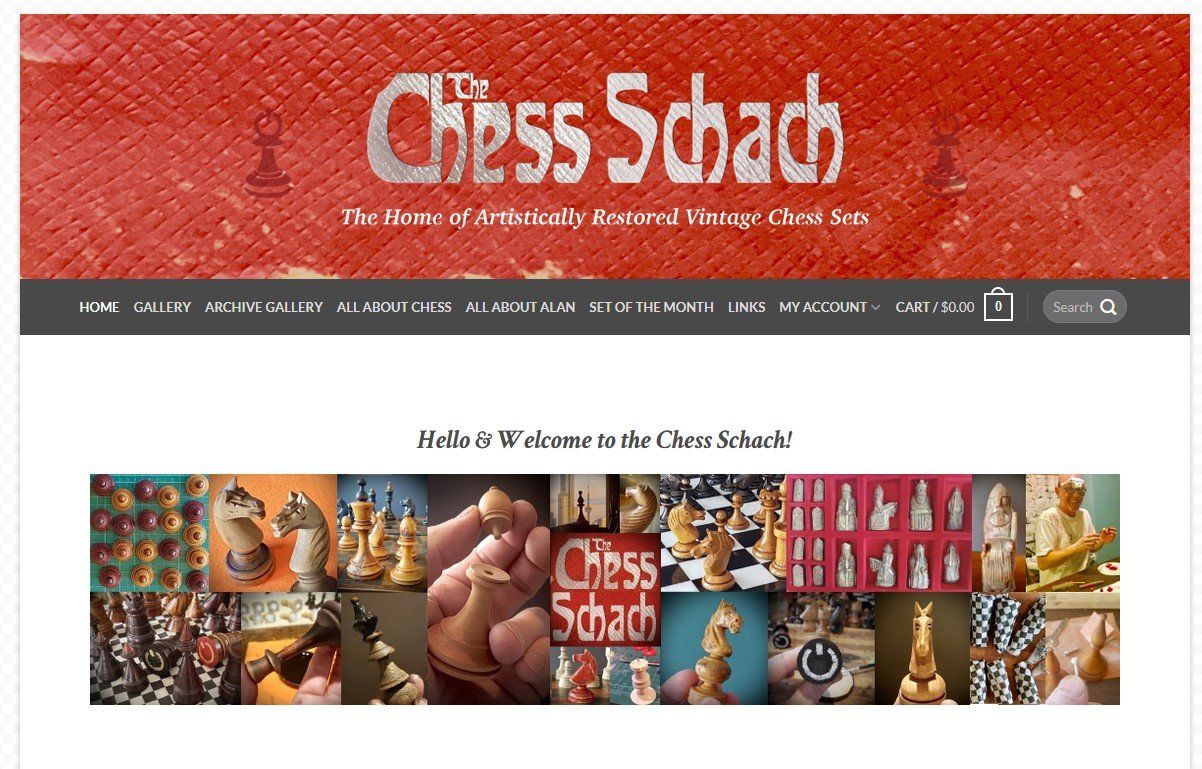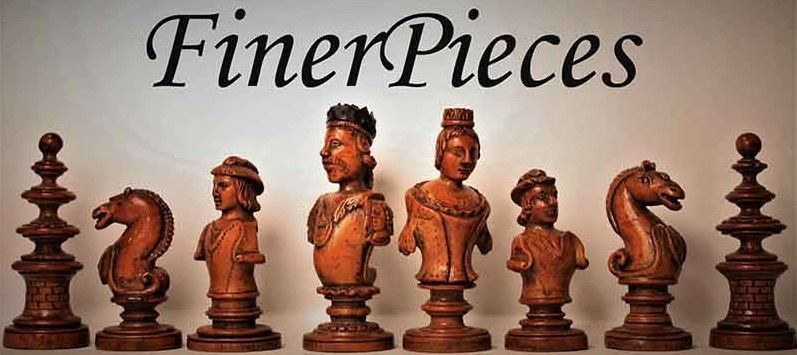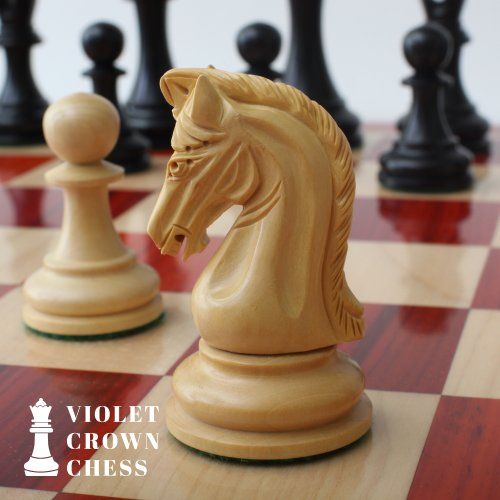Japanese Staunton Chess Set, Golden Castle "Craftsman", 1950s
A Japanese chess set in the Staunton pattern made by Golden Castle Co. Ltd. The company sold different types of Staunton sets under different names, all differing in size and also slightly in the design. The largest type with 4” kings was called “The Grandmaster” (later just called “Master”), followed by “The Craftsman” with 3.5” kings, “The Aristocrat” with 3.25” kings, “The Craftsman Master” with 3” kings and “The Craftsman Artisan” with 2.5” kings. In addition, Golden Castle sold a travel set with red and natural lacquered pieces housed in a blue velvet case under the name “Mikado”. The model shown here is a specimen of “The Craftsman” with 3.5” kings, made in the 1950s or 1960s. It came in a fitted case, which is rather unusual, as most of these sets were sold in a dual-compartment, felt-lined, wooden chest. On the underside of the box is a label with the Golden Castle stamp, which helps dating the set. Golden Castle started the production of these sets while Japan was under occupation, i.e. from approximately 1946 onwards, which was indicated by the mark "Made in Occupied Japan". However, in the set shown here, the label reads only "Made in Japan" with a large gap before Japan, which was before filled with "Occupied". Hence, it can be assumed that these labels were used after the occupation of Japan ended and Japan regained Independence, i.e. from 1952 onwards.
The pieces – with the exception of the knights – were based on the 19th century Jaques sets in the so called “Marshall” design. They are weighted and with a high gloss lacquer finish in black and golden yellow, felted with billiard cloth. The set is made of a local wood, a variation of the boxwood, also called Japanese boxwood or littleleaf boxwood (Buxus microphylla var. japonica). The Japanese name is “hime tsuge” (ヒメツゲ), which is why the wood is also referred to as “Tsuge”. It has been cultivated in Japan since approximately 1450 AD, which is well documented due to the use of its wood. The timber is very hard with fine and dense grain, because it takes a long time to grow. It is dimensionally stable when worked and has therefore been a popular material for handicraft products since ancient times, in particular seal and name stamps (in Japanese called “hanko”).
